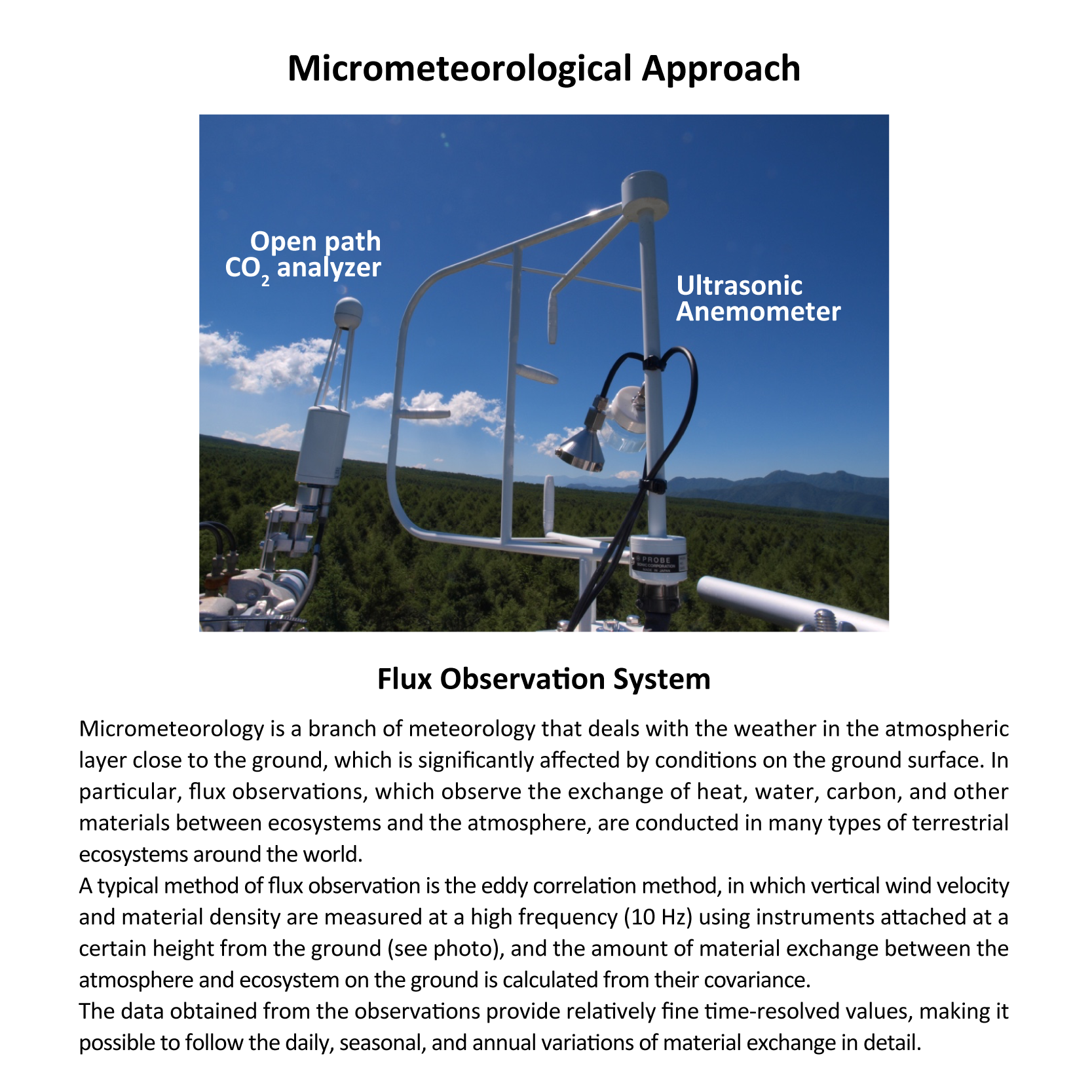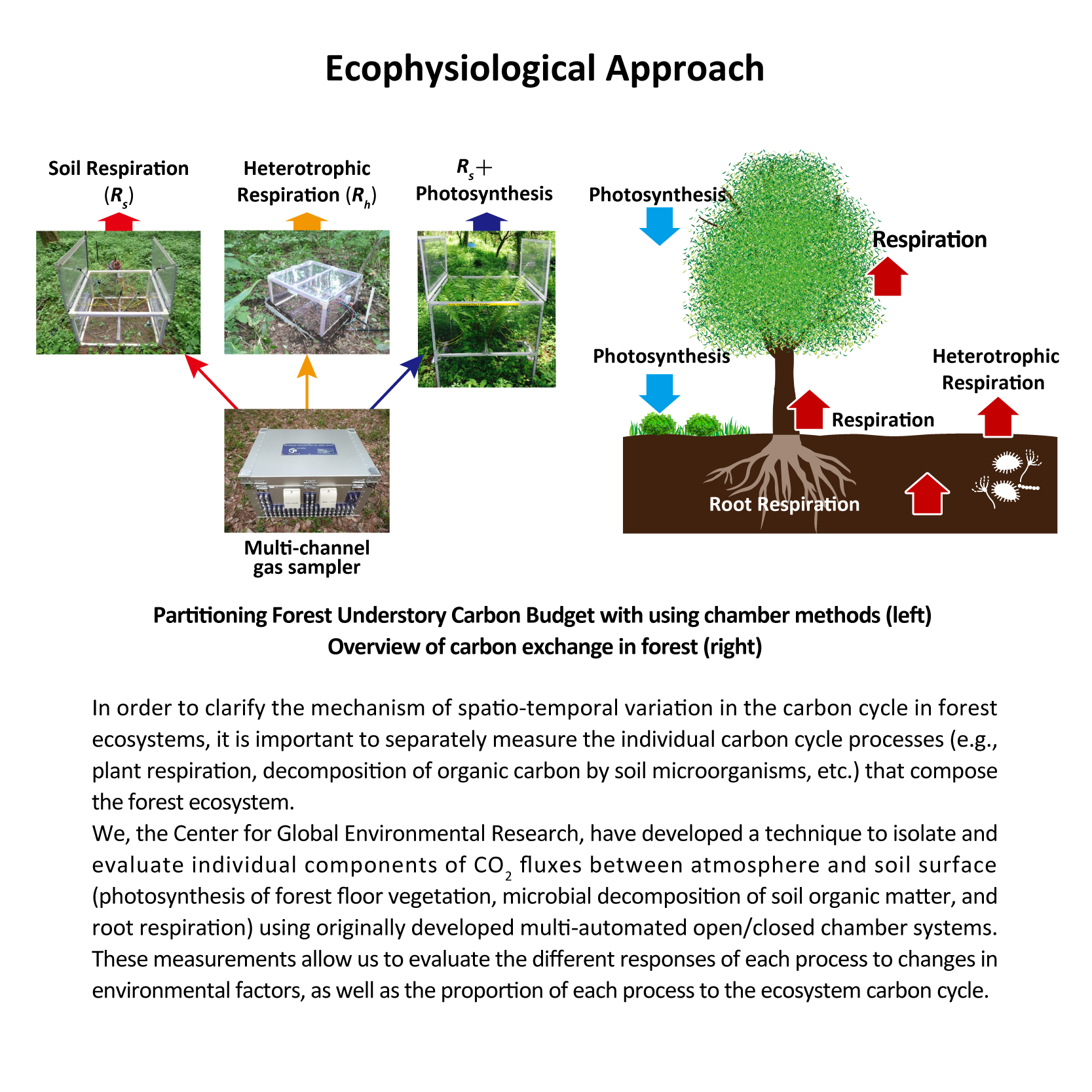Overview of Carbon Balance Monitoring in Forest Ecosystems
Three larch forest sites have been selected for long-term studies on carbon, water, and energy exchange processes. The aim of the studies is to determine how the forests respond to climatic changes and how these responses depend on tree age and recovery processes following natural and artificial disturbances. Observations using the eddy covariance method were started at Tomakomai Flux Research Site in 2000. Observations were also started at Teshio Carbon Cycle and Larch Growth (CCLaG) Experiment Site. In CCLaG, 14 ha of the forest were clear-cut and seedlings of hybrid larch were planted to study the effects of canopy opening on forest ecosystem structure and functions. The Tomakomai observation site was damaged by strong winds accompanying a typhoon in 2004. For this reason, observations at Fuji Hokuroku Flux Observation Site began in 2006 as an alternative. This is a mature larch forest located at the foot of Mt. Fuji. The observations after the typhoon disturbance at Tomakomai site began in 2005 and continue to present. Please visit the site homepage for details. Some observation data is also available at the database portal.


Observation method
We study the biosphere-atmosphere exchange of environmentally important substances and carbon cycle in a forest ecosystem (bole, branches, leaves, roots and soil).
Methodologies are as follows;
- Micrometeorological approach: Measurements of H2O, CO2, CH4 etc. exchanges between atmosphere and forest above the forest canopy using eddy covariance method
- Ecophysiological Approach Chamber based measurements of photosynthesis and respiration
- Forestry biometric approach Measurements of aboveground biomass
- Remote sensing approach




